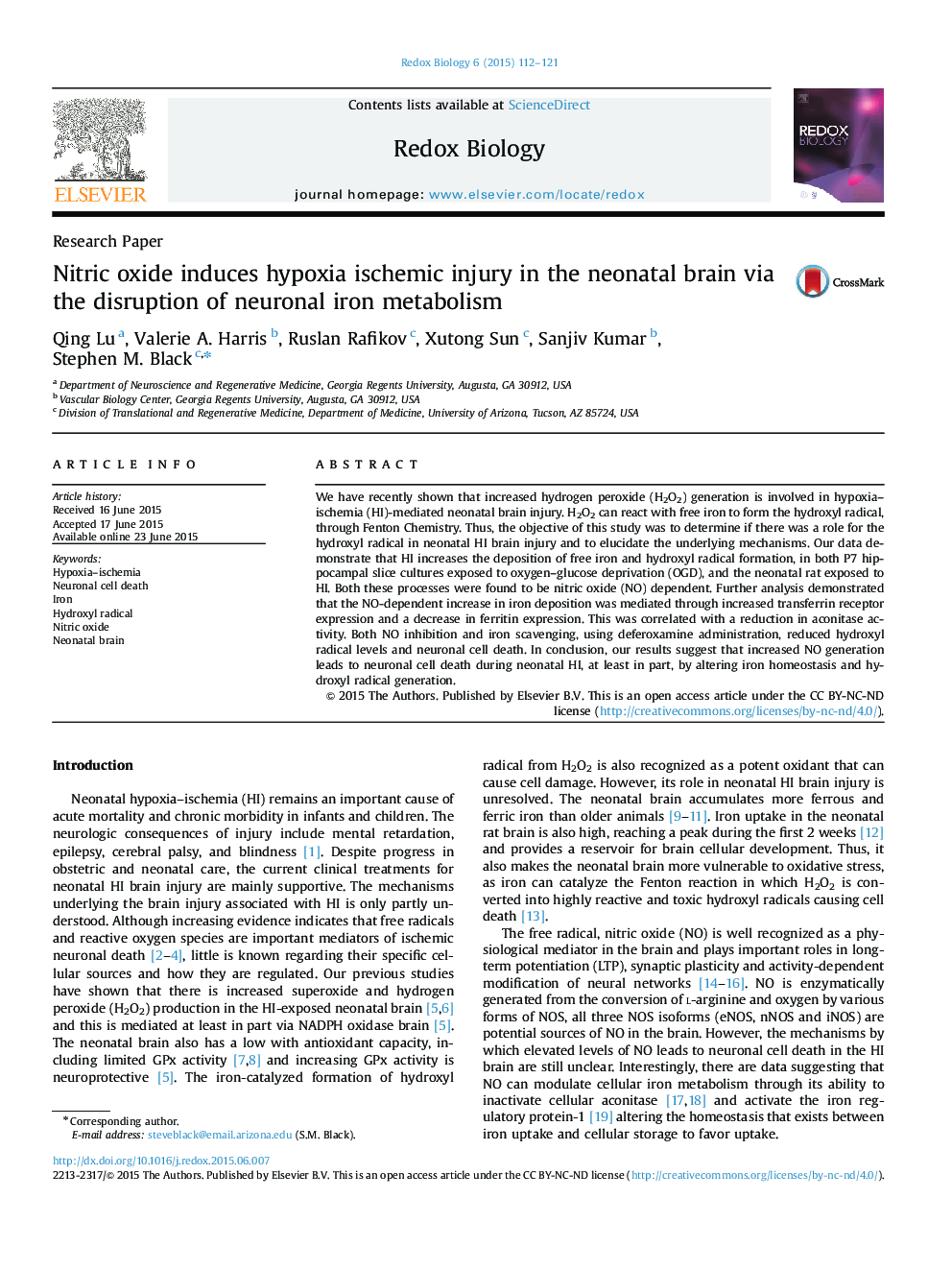| Article ID | Journal | Published Year | Pages | File Type |
|---|---|---|---|---|
| 1922920 | Redox Biology | 2015 | 10 Pages |
•HI increases the deposition of free iron and hydroxyl radical formation in the neonatal brain.•Both these processes are NO dependent.•Increased iron deposition is mediated via increased TfR and decreased ferritin expression.•These processes are involved in the neuronal cell death associated with neonatal HI.
We have recently shown that increased hydrogen peroxide (H2O2) generation is involved in hypoxia–ischemia (HI)-mediated neonatal brain injury. H2O2 can react with free iron to form the hydroxyl radical, through Fenton Chemistry. Thus, the objective of this study was to determine if there was a role for the hydroxyl radical in neonatal HI brain injury and to elucidate the underlying mechanisms. Our data demonstrate that HI increases the deposition of free iron and hydroxyl radical formation, in both P7 hippocampal slice cultures exposed to oxygen–glucose deprivation (OGD), and the neonatal rat exposed to HI. Both these processes were found to be nitric oxide (NO) dependent. Further analysis demonstrated that the NO-dependent increase in iron deposition was mediated through increased transferrin receptor expression and a decrease in ferritin expression. This was correlated with a reduction in aconitase activity. Both NO inhibition and iron scavenging, using deferoxamine administration, reduced hydroxyl radical levels and neuronal cell death. In conclusion, our results suggest that increased NO generation leads to neuronal cell death during neonatal HI, at least in part, by altering iron homeostasis and hydroxyl radical generation.
Graphical abstractFigure optionsDownload full-size imageDownload as PowerPoint slide
